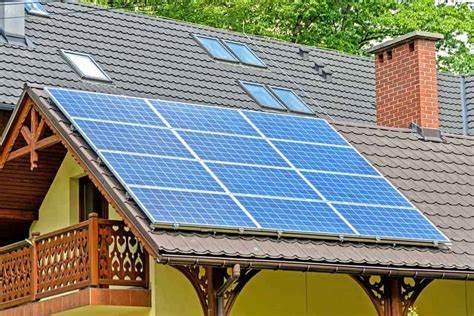As the world embraces sustainable energy solutions, residential solar panels have emerged as a game-changer, offering homeowners a path to energy independence and long-term savings. However, one critical question often weighs on the minds of prospective solar adopters: “How long will it take to recoup my investment?” Unlocking the true financial potential of your solar panel system hinges on understanding the payback period – the time it takes for the energy savings to offset the initial installation costs.
The Payback Period: A Metric for Profitability
The payback period serves as a crucial metric for evaluating the profitability of your solar investment. A shorter payback duration translates to faster returns and maximized savings over the system’s lifespan. Conversely, a prolonged payback period may diminish the overall financial benefits, making it essential to crunch the numbers accurately.
Personal Narrative: Embracing Solar, Calculating Returns
As a homeowner who recently made the transition to solar power, I can attest to the importance of understanding the payback period. When I first contemplated installing solar panels, the upfront costs seemed daunting. However, upon delving into the calculations and factoring in the long-term energy savings, I realized that the investment would pay for itself in a relatively short span of time.
Factors Influencing the Payback Period
Several variables influence the payback period for residential solar panel systems, including:
1. System Size and Cost
The larger the solar panel system, the higher the initial investment. However, a more extensive system also generates more energy, potentially accelerating the payback period. Striking the right balance between system size and cost is crucial for optimizing returns.
2. Solar Energy Production
The amount of solar energy your system produces directly impacts the energy savings and, consequently, the payback period. Factors like your location’s solar irradiance, panel orientation, and shading conditions play a significant role in determining energy production.
3. Utility Rates and Incentives
Rising utility rates can hasten the payback period by amplifying the savings generated by your solar panels. Additionally, government incentives, such as tax credits and rebates, can significantly reduce the initial investment, shortening the payback duration.
4. Financing Options
The financing method you choose can influence the payback period. Purchasing the system outright may require a larger upfront investment but could lead to faster payback compared to leasing or power purchase agreements (PPAs).
Calculating the Payback Period: A Step-by-Step Guide
To accurately determine the payback period for your residential solar panel system, follow these steps:
1. Estimate Annual Energy Production
Utilize online solar calculators or consult with a professional to estimate the annual energy production of your proposed system based on your location, system size, and other factors.
2. Calculate Annual Energy Savings
Multiply your estimated annual energy production by your current utility rate to determine the annual savings you can expect from your solar panel system.
3. Factor in Incentives and Rebates
Deduct any applicable incentives, tax credits, or rebates from the total system cost to determine your net investment.
4. Divide Net Investment by Annual Savings
Finally, divide your net investment by the annual energy savings to calculate the payback period in years.
Embracing a Forward-Looking Approach
While the payback period is a crucial consideration, it’s essential to adopt a forward-looking mindset when evaluating your solar investment. As utility rates continue to rise and solar technology advances, the long-term savings and environmental benefits of residential solar panels will become increasingly significant.
Moreover, the proliferation of innovative financing options, such as solar loans and leases, has made solar energy more accessible than ever before. By exploring these avenues, you can potentially reduce the upfront costs and accelerate the payback period, maximizing the profitability of your investment.
An Analytical Perspective: Weighing the Factors
From an analytical standpoint, calculating the payback period involves weighing various factors and making informed decisions. For instance, homeowners in regions with higher solar irradiance and favorable incentives may realize faster payback periods, making solar a more attractive investment.
Conversely, those in areas with lower utility rates or limited sunlight exposure may experience longer payback durations. In such cases, it becomes crucial to carefully evaluate the long-term benefits and potential appreciation in home value to determine the overall viability of the investment.
Conclusion: Unlocking Sustainable Profitability
Calculating the payback period for your residential solar panel system is an essential step in unlocking its true financial potential. By understanding the variables at play and employing strategic calculations, you can make an informed decision that aligns with your long-term financial goals and commitment to sustainable living.
Embrace the power of solar energy, crunch the numbers, and embark on a journey towards energy independence and profitability. As the world transitions towards a greener future, your investment in residential solar panels could prove to be a wise move, yielding both financial and environmental rewards for years to come.
Have you ever wondered if investing in solar panels for your home is worth it? With rising energy costs and growing environmental concerns, more homeowners are considering solar energy. But before making the leap, understanding the return on investment (ROI) is crucial. This article will guide you through everything you need to know about calculating the payback period for residential solar panels.


